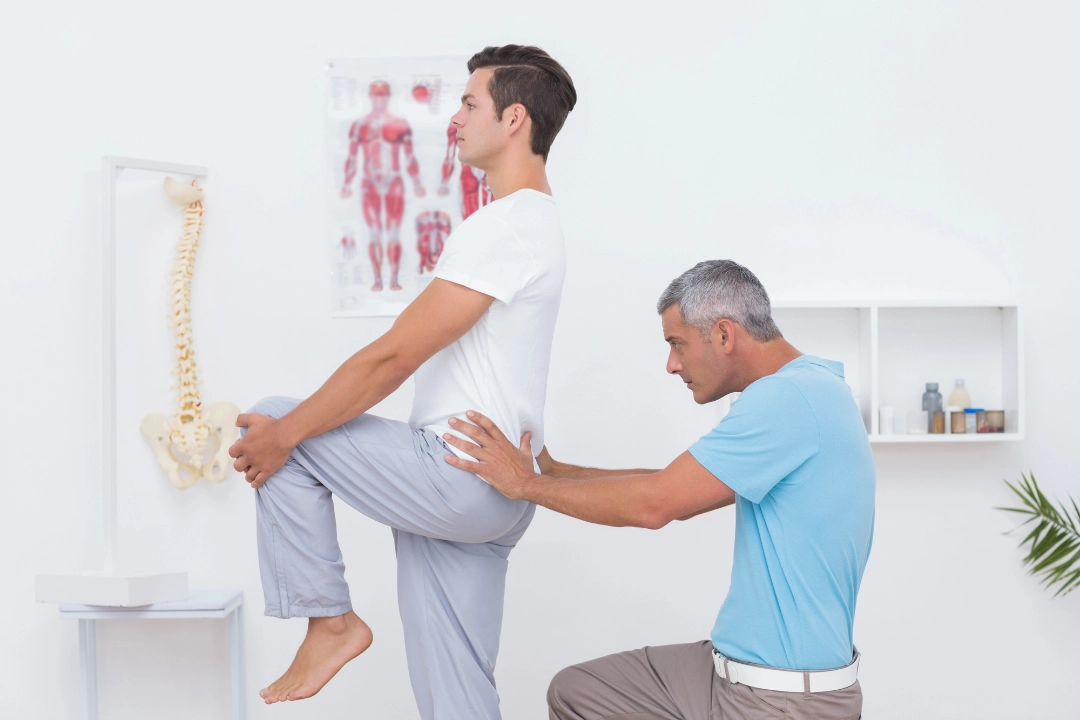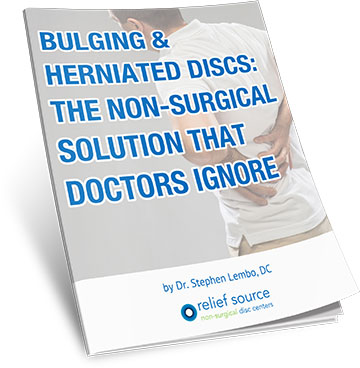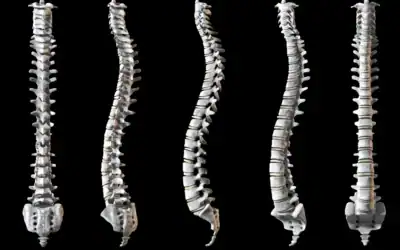Tips and Strategies for Relief
Chronic back pain can be debilitating, preventing you from enjoying daily activities, engaging in your favorite hobbies, or even performing simple tasks like sitting at your desk or lifting groceries. Many people suffering from conditions such as herniated discs, bulging discs, or degenerative disc disease often find themselves wondering if there’s any way to get lasting relief without surgery or medication.
While advanced non-surgical treatment technologies like those offered at Relief Source Non-Surgical Disc Centers play a crucial role in treating chronic back pain, another often overlooked aspect of pain management is posture. Maintaining proper posture is essential for reducing strain on your spine, alleviating pain, and preventing further injury.
In this blog post, we’ll explore how posture affects back pain, why it’s so important to focus on posture for long-term pain relief, and practical tips you can incorporate into your daily routine to improve your posture and manage chronic back pain more effectively.
How Posture Impacts Chronic Back Pain
When we talk about posture, we’re referring to the alignment of your spine and how you hold your body while sitting, standing, or moving. Poor posture places excess pressure on the muscles, discs, and joints in your back, contributing to pain and discomfort. Over time, improper posture can worsen the underlying conditions causing your pain, such as herniated discs, sciatica, or spinal stenosis.
In particular, slouching or hunching forward when sitting or standing misaligns the spine, causing uneven pressure on the discs and nerves. This can lead to increased muscle tension, disc degeneration, and even pinched nerves, which worsen chronic back pain. Conversely, maintaining good posture helps evenly distribute the weight on your spine, reducing pressure on your back and promoting better movement.
Why Good Posture is Key to Managing Back Pain
- Reduces Strain on Your Spine
When your body is properly aligned, your spine bears weight evenly across its structure. This reduces unnecessary pressure on the discs, joints, and muscles in the back, preventing additional strain that can aggravate existing back pain. - Prevents Further Disc Damage
For individuals with herniated or bulging discs, improper posture can exacerbate the issue. Slumping or rounding the back places additional stress on the affected discs, increasing the risk of further damage and prolonged pain. By practicing good posture, you can protect your discs and promote their healing. - Improves Circulation and Oxygen Flow
Proper posture opens up your chest and allows for better breathing. With better oxygen flow to your muscles, tissues, and discs, healing occurs more efficiently. Proper alignment also enhances circulation, which helps deliver nutrients to injured areas and speeds up the recovery process. - Relieves Muscle Tension
When you sit or stand with poor posture, your muscles work harder to support your body, leading to tension and discomfort. Over time, this can result in chronic muscle pain. Good posture minimizes this muscle strain and helps to relax the muscles in your back and neck.
Practical Tips for Improving Posture and Reducing Back Pain
Now that you know why good posture is crucial for managing chronic back pain, here are some practical tips and strategies to help you maintain proper alignment throughout the day:
1. Mind Your Sitting Position
For many people, prolonged sitting is a major contributor to poor posture and back pain. If you work at a desk, follow these tips to maintain proper sitting posture:
- Sit all the way back in your chair so that your lower back is fully supported.
- Keep your feet flat on the floor (or on a footrest) with your knees at a 90-degree angle.
- Ensure your computer screen is at eye level to avoid craning your neck forward.
- Take regular breaks to stand up, stretch, and walk around.
2. Strengthen Your Core
A strong core provides better support for your spine and helps maintain good posture. Incorporate exercises into your routine that target the abdominal, lower back, and pelvic muscles. Activities like planks, bridges, and leg lifts can help improve your core strength and prevent slumping or rounding of the back.
3. Use Ergonomic Furniture
If you’re dealing with chronic back pain, investing in ergonomic furniture is essential. Look for chairs with proper lumbar support, adjustable armrests, and a seat that allows you to maintain the correct posture. An ergonomic workstation can make a big difference in reducing back strain throughout the day.
4. Stand Tall
When standing, keep your weight evenly distributed on both feet, and avoid locking your knees. Make sure your shoulders are aligned with your hips, and your head is level. If you need to stand for long periods, consider using a footrest to shift some of the weight off your lower back.
5. Lift Correctly
When lifting objects, always bend at the knees (not at the waist) and keep the object close to your body. This helps reduce strain on your lower back and prevents injury.
6. Sleep in a Supportive Position
Your sleeping position plays a key role in maintaining good posture. Try sleeping on your side with a pillow between your knees to maintain spinal alignment. If you prefer sleeping on your back, use a small pillow under your knees to reduce pressure on your lower back.
7. Stretch Regularly
Incorporating regular stretching into your routine can help prevent muscle tightness and improve flexibility, which is essential for maintaining good posture. Focus on stretches that target the back, hips, and shoulders to alleviate tension and keep your body in proper alignment.
How Relief Source Non-Surgical Disc Centers Can Help
At Relief Source Non-Surgical Disc Centers, we understand that managing chronic back pain is a multifaceted process. Along with teaching our patients how to improve their posture, we offer advanced non-surgical treatment options, including DRX 9000 Non-Surgical Spinal Decompression, Class IV Warm Laser Therapy, and Softwave Therapy, to address the underlying causes of your pain.
If you are struggling with chronic back pain due to poor posture or spinal conditions like herniated discs or sciatica, our integrated treatment approach can help provide you with relief and healing without the need for surgery.
Get Started Today
If you’re ready to learn more about how to improve your posture and manage your back pain more effectively, schedule a consultation with us today. At Relief Source Non-Surgical Disc Centers in Massapequa, NY, we’ll work with you to create a personalized treatment plan that addresses your unique needs and helps you get back to living an active, pain-free life.
Call us at (516) 882-6337 or visit our clinic at 5254 Merrick Road, Suite 1, Massapequa, NY 11758.
- 5 Signs Your Spine is Crying for Help - September 19, 2025
- Lifestyle Habits That Can Help Prevent and Manage Chronic Back Pain - April 9, 2025
- The Importance of Posture in Managing Chronic Back Pain: Tips and Strategies for Relief - April 9, 2025






